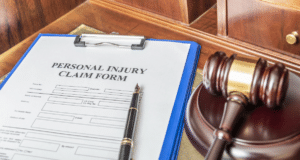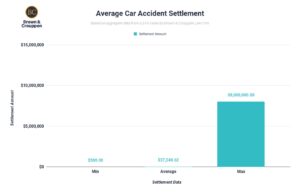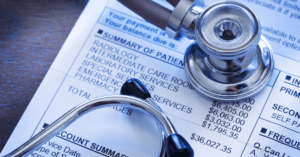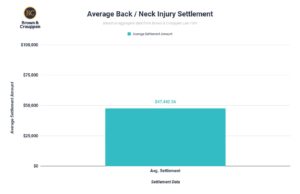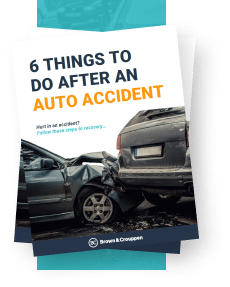Consider this: the insurance adjuster is interested in offering you as little compensation as possible. They make offers immediately after the wreck to make sure that they don’t pay as much. So while they may say they’ll cover the medical bills, the adjuster will then hem and haw about how long your physical therapy is lasting or whether your arthroscopy is related to the wreck. They might argue that because imaging showed you also had degenerative joint disease, they don’t have to cover the cost. They may tell you to turn everything over to your health insurance, but they won’t tell you that (in some instances) you have to pay your health insurance back. This could leave you to find out only after the release is signed that you’re still on the hook.
Below are some of the ways that injured parties benefit from hiring a lawyer to handle their car crash claim.
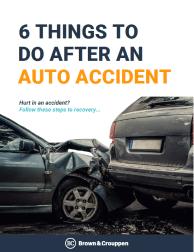

Use our legal checklist to learn what to do after an accident and understand key legal considerations for recovering financial compensation.
1. FIND THE RELEVANT PARTIES (AND INSURANCE COVERAGES)
It’s easy to figure out who is at fault when you are rear-ended: it’s the person driving the vehicle. However, depending on the state where the collision occurred and the circumstances, there may be more defendants, even in this scenario. These could be the owner of the car, the employer of the driver (if the driver was working at the time of the crash), or even a restaurant that over-served the defendant driver (depending on the state). Since most states only require that drivers carry liability coverage up to $25,000 per person and $50,000 per incident, the insurance carrier may only be responsible for up to $25,000 to any one person injured in a collision, regardless of the severity of the injury. Finding additional defendants (and therefore additional insurance policies) can help cover the full extent of your damages.
2. NEGOTIATE THE SETTLEMENT
One of the most important aspects of a personal injury attorney’s job is negotiating the claim. Because experienced lawyers have negotiated hundreds, if not thousands, of cases, they have a better idea of what the settlement value of the case should be, given the facts and evidence before them. In negotiating a case, attorneys take a lot of different information into consideration. Negotiations can happen at any point in the case. So your lawyer should always keep you informed on what evidence helps your case and what information hurts it, as well as the status of the negotiations.
In our civil justice system, the only recovery that the injured party can demand is monetary compensation. However, money can never make an injury whole. Given a choice, injured parties would choose to never experience the pain and limitation of their injury, no matter the amount of compensation they might receive. However, like an egg that cannot be unscrambled, the courts cannot take away the injury itself. What they are able to do is allow for the at fault party to provide monetary damages to the injured person as a means of accountability.
Typically, the at fault party will carry some form of casualty insurance to protect them from large liability claims. This is especially true in the cases of motor vehicle crashes or premises liability injuries.The insurance carrier will then assign an adjuster to negotiate the claim on the at fault party’s behalf and the at fault party will have little to no say in how much compensation is offered to the injured party.
Negotiations will occur between the adjuster and/or their assigned defense counsel (without input from their insurer) and the personal injury attorney, who acts with their client’s input and authority. Settlement negotiations can be made before a lawsuit has been filed or afterwards. Sometimes, either by court request or by the request of one party, the parties may enter into a mediation to negotiate the claim. This is a non-binding process where the parties sit down in the same building with an experienced mediator (or someone who has negotiated similar types of claims over the years) who will help the parties come to a resolution on the case.
3. DETERMINE RELEVANT MEDICAL BILLS AND LIENS AND NEGOTIATE THEM DOWN
Medical bills are not always clear cut. Depending on the state that your injury occurred in, a jury may be presented with different information about the cost of your medical treatment. In some states, the medical bills that can be submitted to the jury are the total bills before any insurance payments or contractual adjustmentsHowever, in other states, the jury can see the bills after the contractual adjustments and may consider the reasonable cost of treatment to be only that which was actually paid or owed on the medical bill. This allows the at fault party, or more likely their insurer, to reap the advantages of the injured party carrying health insurance or the medical provider allowing charitable reductions in their billing, without passing along any benefit to the injured party or to the public at large.
Occasionally insurance adjusters will argue that the medical treatment that is being associated with the injury is not actually related to the accident in question This is a particularly likely approach when there is a “gap” in treatment or the charges assigned by the medical provider are not reasonable and necessary, so that the adjuster will attempt to assign their own value to the treatment. These are defense strategies to “nickel and dime” the injured party, who still owes the bill regardless of whether the adjuster thinks it’s a justifiable cost. Good personal injury attorneys see these tactics as what they are and will not accept them at face value in the negotiating process. If these questions become a serious contention in negotiations or at trial, then the personal injury attorney can present evidence from the prescribing doctor that indicates that the treatment was related to injuries sustained in the incident in question (i.e., the crash or fall).They may also hire an expert to provide an opinion regarding the reasonableness of the cost of medical care.
GET HELP WITH YOUR CAR ACCIDENT CASE
If you or someone you know has been involved in an auto accident, get help from a car accident attorney to ensure you are taking the right steps to get the compensation you deserve. The lawyers at Brown & Crouppen can help you determine if you have a case and help you obtain fair compensation.

